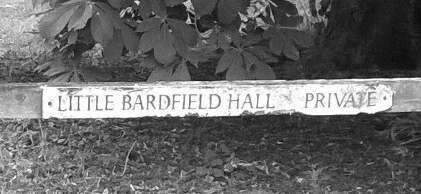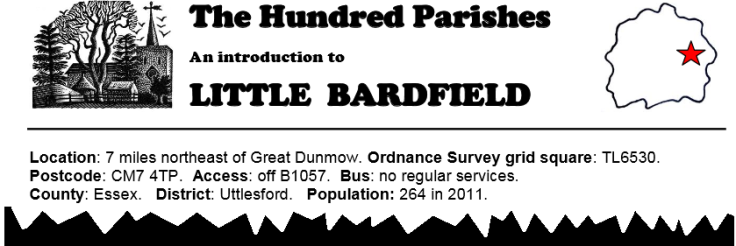1839, the Barossa convict ship. Mrs Northcote of Bristol wrote about her husband ‘late of Bristol’ and my bristles hackled. Where might her husband be to leave him no longer a city resident. What might he have done. White-collar crime is what. He had been a trusted accountant and had fallen from grace being sent out to the colonies in the last years of transportation. He begged for clemency over there, and died a few years later.
1840s, Edward Bowden the third who spent five or more years in the Isle of Man, working on the building of the Lady Isabella Wheel at Laxey, now the world’s largest working water-wheel. Its purpose was to reduce damp in the lead mines and it features on the BBC TV programme, Coast.
1840s, Upper Street Islington. F S Boyce the carman tells his tale of the priest and the rentboy.
1844, the Westoe and Pontop railway had come into place to permit goods and supplies to be loaded and unloaded at the great docks of the Tyne. Waggons were heavy and parts of the rail were on an incline. A young man age 30 was caught between two waggons. His knee was the part affected. Some men worked to free him and he was sent home for a few days. His name was John Gibson and he died of something similar to blood poisoning eight days later, leaving an only child. I once received £10 for listing all of this child’s descendants. Oh; his brother had the Waggoners Arms right in Westoe.
1850, first white birth in Mount Vernon NY was a British couple Mr and Mrs Gould.
1850, John Munroe arrives in Buffalo, then a city of 40,000 inhabitants and swelled to ten times that size in his lifetime. From their door in Carroll-street, they had an unobstructed view of Lake Erie. On Sundays they would walk along the shore where sheep were pastured. These facts were deemed remarkable by the newspaper publishing this history on Munroe’s death (1916).
1853, Silver Hill Gap, a strip of land dividing the Port Royal and Blue Mountains which carve up southern Jamaica. Accessible today by botanists and tourists wishing to see its unique flora, in the 1850s its assets were being assessed by a group of mining adventurers including it would seem as their spokesman my forebear Henry Lowry. His father was good friends with Sir Charles Lemon (of Lemon Street) at Truro and he was surely given a truly awful assignment, of which he makes light. Henry wrote a long letter by candlelight from the miners’ accommodation. The scenery was simply stunning, particularly the vales and rivulets which this part of the mountain had on offer.
1854, soldiers returning from the Crimean War, witnessed by Cornelius Martin, who writes about it 90 years later.
1854/5, Lake Nicaragua. This watery lagoon was an obstacle all men bound for California would take, at this juncture. And take it they would take upon their return journey heavy and bounden with coin and mining proceeds. Into the miry drink went miner Francis Harris in an unrecorded vital event some time in 1854/5. I can tell you he hailed from the Camborne, Crowan borders and was 36 with a wife and son somewhere in America. His niece Jane shivered under her Welsh wool blanket as she heard the news, age 16 likely sharing a room with her sisters. And the gold? Made its way back through loyal friends to the widow and son.
1858, Galway. The town’s policeman nearly declares himself Protestant in a bid to marry Englishwoman Sarah Urch. His letter to the bishop results in barriers being removed and Sarah being officially joined in matrimony with her intended.
1860s, Philadelphia. Philadelphia was booming and was the de facto capital of the country during these frantic times. The United States army of soldiers just had to win against the southern Confederates and new recruits were arriving the entire time to enlist and get kitted out. The Western Reserve newspaper in Ohio published a whole huge sheet of eligible men for north-eastern counties, which must have been a rather crude attempt at intimidation. The Scotts laughed all the way to the bank. They had switched from corn to clothing and were now mass-producing uniforms, or at the very least providing an aggressive logistics operation, getting the cloth to the battlefield where an army of ‘sutlers’ in wheelbarrows would deliver uniforms to soldiers as they got ready for battle. This sounds crude and ungainly, but it fed the war machine.
1860s, rulers in Mexico. Without wishing to be unkind, southern America was in turmoil for most of the nineteenth century. For any individual to have become king and stayed that way for more than 3 years was extraordinary. Statistically the odds of an emperor covering all the lands east-west crossing paths with us was very improbable. But at Pachuca silver mines in the 1860s, the Emperor visited. Matthew Bowden was a Cornishman then at the mines. The empire faded but the pasties remained: you could still buy them in the alleys of Pachuca in the last 50 years.
1863, Chickamauga woods, northern Georgia. Sick to their stomachs, young men patrolled the smokey early morning woods at Chickamauga, knowing the enemy were just the other side of this false security blanket. Support lay many fields behind them, and they were largely on their own. The slaughter was awful, and among this name lay Cornish-born John Rodda. Elsewhere, two boys were being raised together in Morriston, his aunt’s family, one of whom would become my Grandfather’s uncle.
1863, the great mill, north-eastern Ohio. This part of the State was never under the flattening influence of the great ice-sheets from the Ice Age. Consequently there was gradient and water ran in different directions on its way to Lake Erie. Frankie and Sarah turned 21 on the same day in the middle of the civil war; their brothers had headed to Lexington and Kentucky fighting the cause of the northern states. Blood ran and flowed. At the time the girls pensively stood at the mill, perhaps nothing was known. They got on the scales as was the practice for all the women in the family. The numbers they recorded were not the numbers they needed.
1870, siege of Paris. Mary Amelia Lowry (17) is obliged it’s said to eat rats.
1870s, Belgian’s chief astronomer was on the run for 20 years for his extreme political views. He chose to spend some of that time in Jamaica, where W B Hannan, then a merchant in Port Royal, offered him the use of some of his land.
1870s, prior to the mail trains hitting the tracks and the opening of the great Pacific-Atlantic railways, riders such as tiny William Page (18) from Birmingham, were required to serve on the fabled Pony Express.
1880, in the big woods, Wisconsin. As far as I know Agnes Palfrey lived at Waukesha, a sizeable town. I think she and her husband went further inland, to a cabin of some kind. Her family managed to keep going in these primitive locations, their educated mother craved a newspaper which she occasionally got. She cursed and cursed herself for her decision. Back in Buffalo she could have stayed in the fine town-house on Bryant-street, but the romance of the backwoodsman sent her to these parts. We know from Laura Ingalls Wilder that native Americans ‘Indians’ and wild bear were a constant threat. Money, weather, disease and rodents would be, too. Every few months her husband would come back, with a beard so long he frightened his children. Way later in 1911 home arrived in the form of a younger brother, ministering to the northern lakes. But Agnes was searching for an end, not a beginning, and so she took one.
1880s, Rhodes visits the Cotty stores in Kimberley, South Africa.
1880s, Richmond Park. Love blossoms under the penniless Tecks, Queen Victoria’s fat and clueless cousins. The under-butler finds ever more excuses to visit the kitchen and at his marriage to the cook a few years later, they decide their first child will be called Adelaide after the Tecks.
1888, Springbok migration. Postmaster Davie is overwhelmed with Springbok at Prieska. With his friend he attempts a count, but is utterly floored.
1880s, Tonga. Mr Stephinson the Methodist missionary was getting on fairly well with the King of Tonga until the king’s eldest son, the 17 year-old heir died. Stephinson didn’t allow the king any latitude – either he was a Christian or he wasn’t. And going back to old rituals, even for a dead son, didn’t seem right. The relationship deteriorated and Stephinson made his way back to Sydney. He’d earlier been out in the Friendly Islands, which hopefully had lived up to their name slightly more. He had married Emma Swanton from Maperton, Somerset.
1881, Redland Green, Bristol. Elms grew in a stately avenue and fields with stiles and rippling brooks and the air full of the singing of birds. Hattie Board walked hand-in-hand with her great-uncle Octavius Harding.
1881, The Age’s E C Martin signs his name as one of a half-dozen witnesses to the Colony’s execution of Ned Kelly, outlaw in an event that polarises the English and Irish Australian communities.
1890, the gas workers’ strike in Bermondsey was the beginning of a struggle to get decent wages and conditions. There were plenty of opportunities for blacklegs to come and load the fuel to keep the city’s lights and gas working. Into this maelstrom stepped Arthur Smith, 33 from Norwich.
1890s, life on the coffee plantation in Mysore from old photographs.
1890s, Esther Davis shoots the cobra in Florida.
1895, Castle Donington. Fatherless Albert Creed arrived at London House in the town aged 14. He had never seen gas lighting, and yet this huge store was entire gas-lit. Fifty kilogram bags of flour were calling his name, and up a tall flight of stairs he carried them. Currants, raisins and sultanas needed sieving. Customers demanding sugar, tea and fruit expected these to be carefully and snugly wrapped in paper. The floors needed regular sweeping and then the great windows to be washed. The internet claims this whole enterprise never existed, but it was the making of Bert and dozens of other boys like him. By the time he left he would be a preacher, headed to bring Christian cheer to the miserable mill-towns of Lancashire.
1896, Percy Bell is learning Chinese on the street and learns the Chinese for ‘get out fast’ after witnessing a gangland murder in Chinatown.
Moments in History – Elizabeth
Moments in History – Edward and the Georges
Moments in History – Victorian era
Moments in History – little Ice Age to Victoria






















